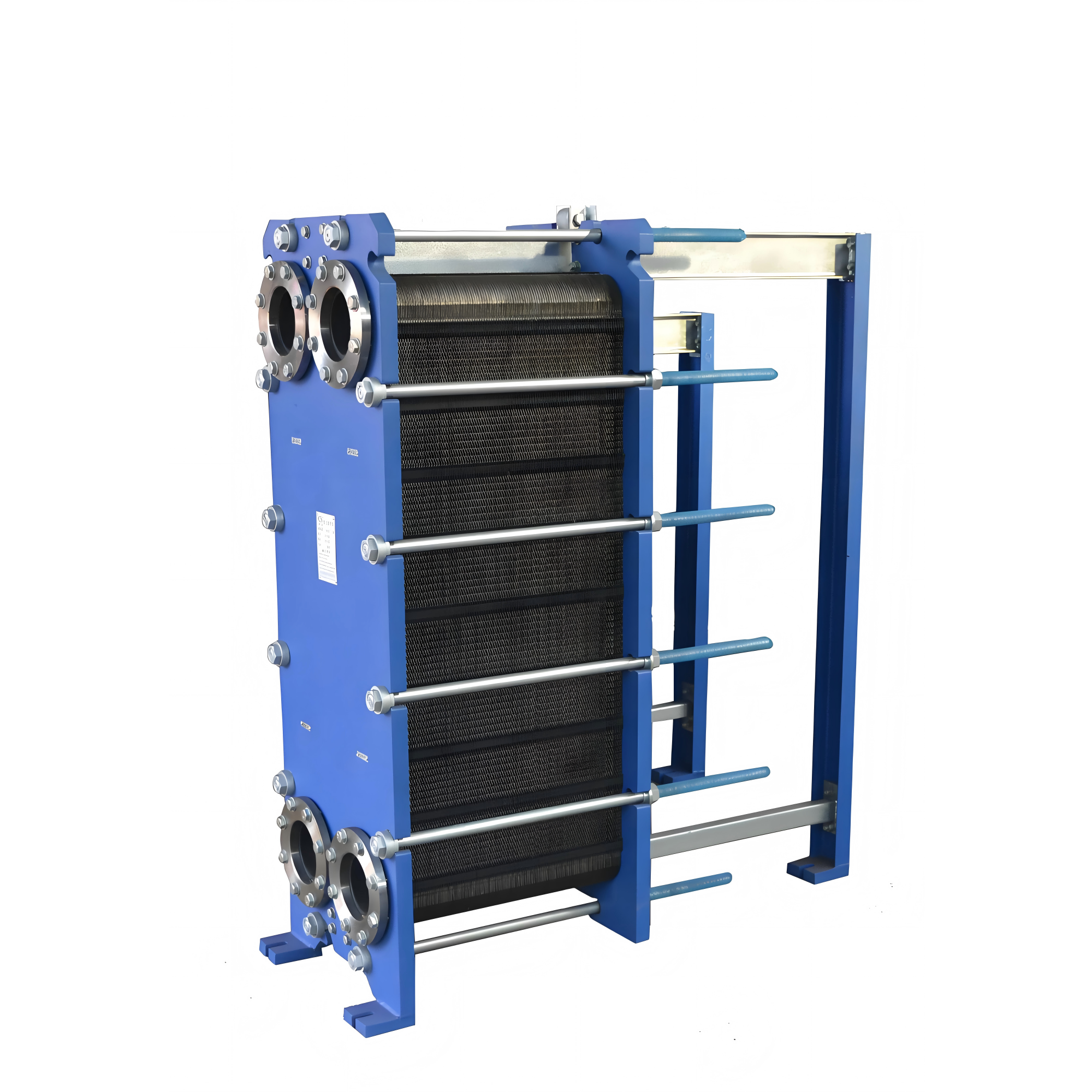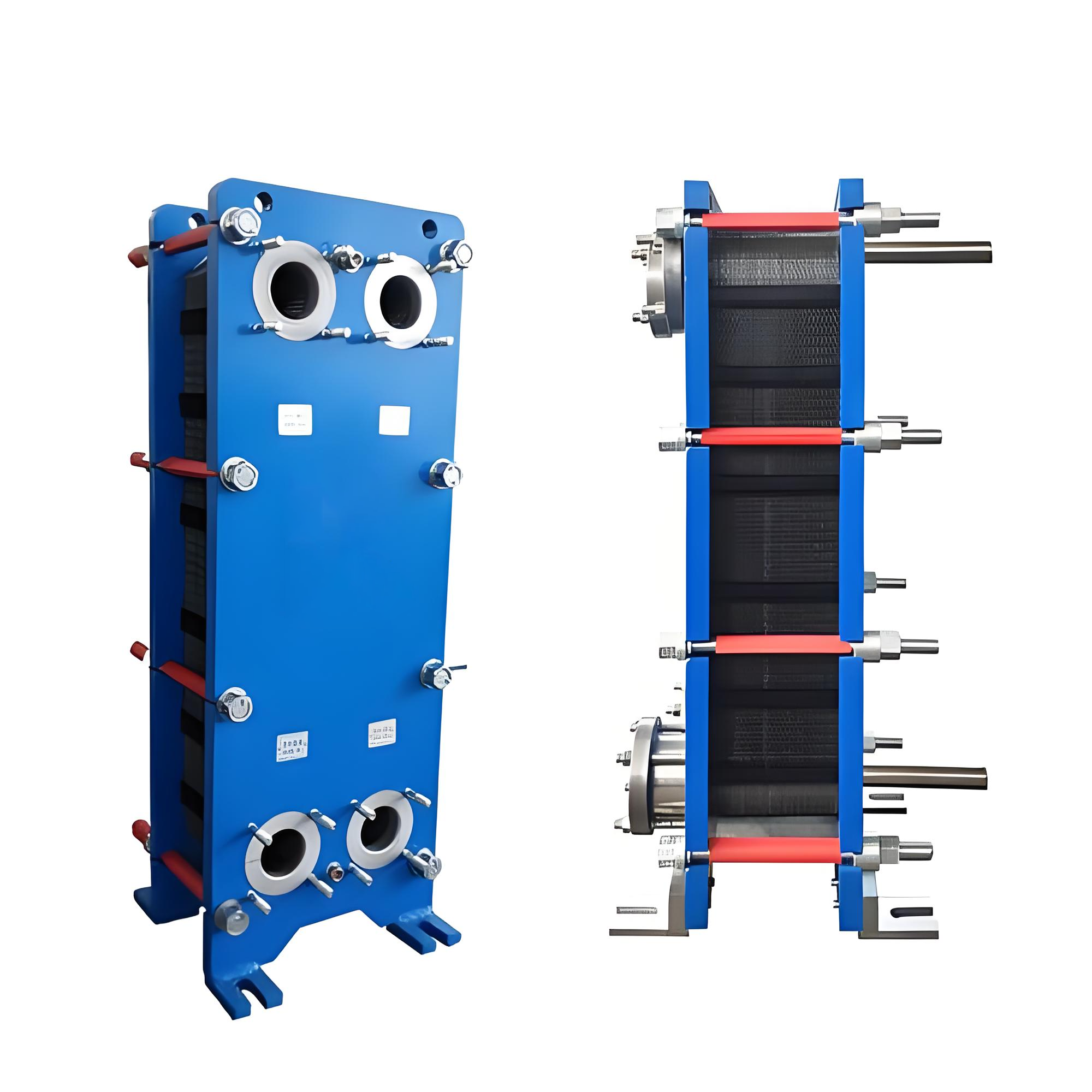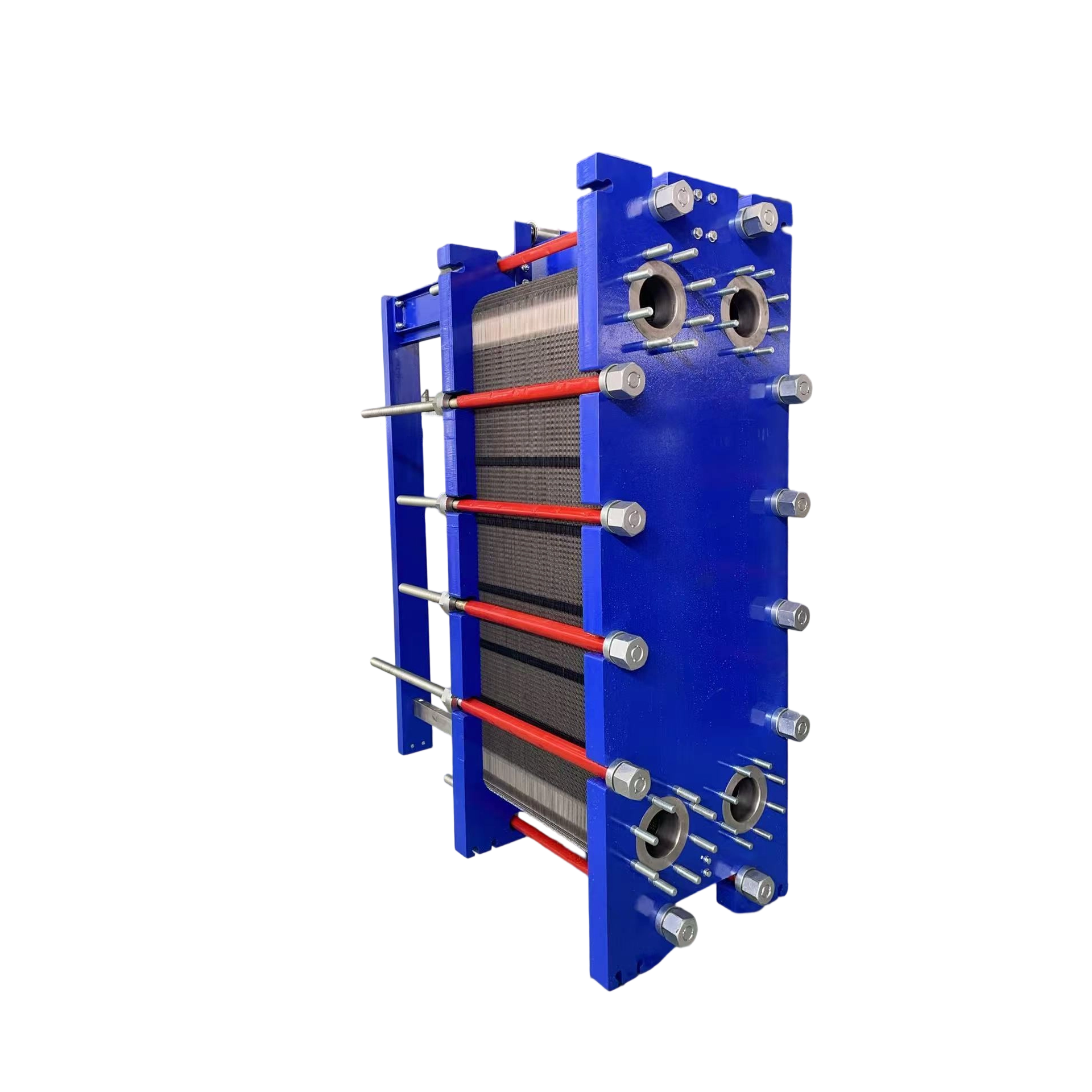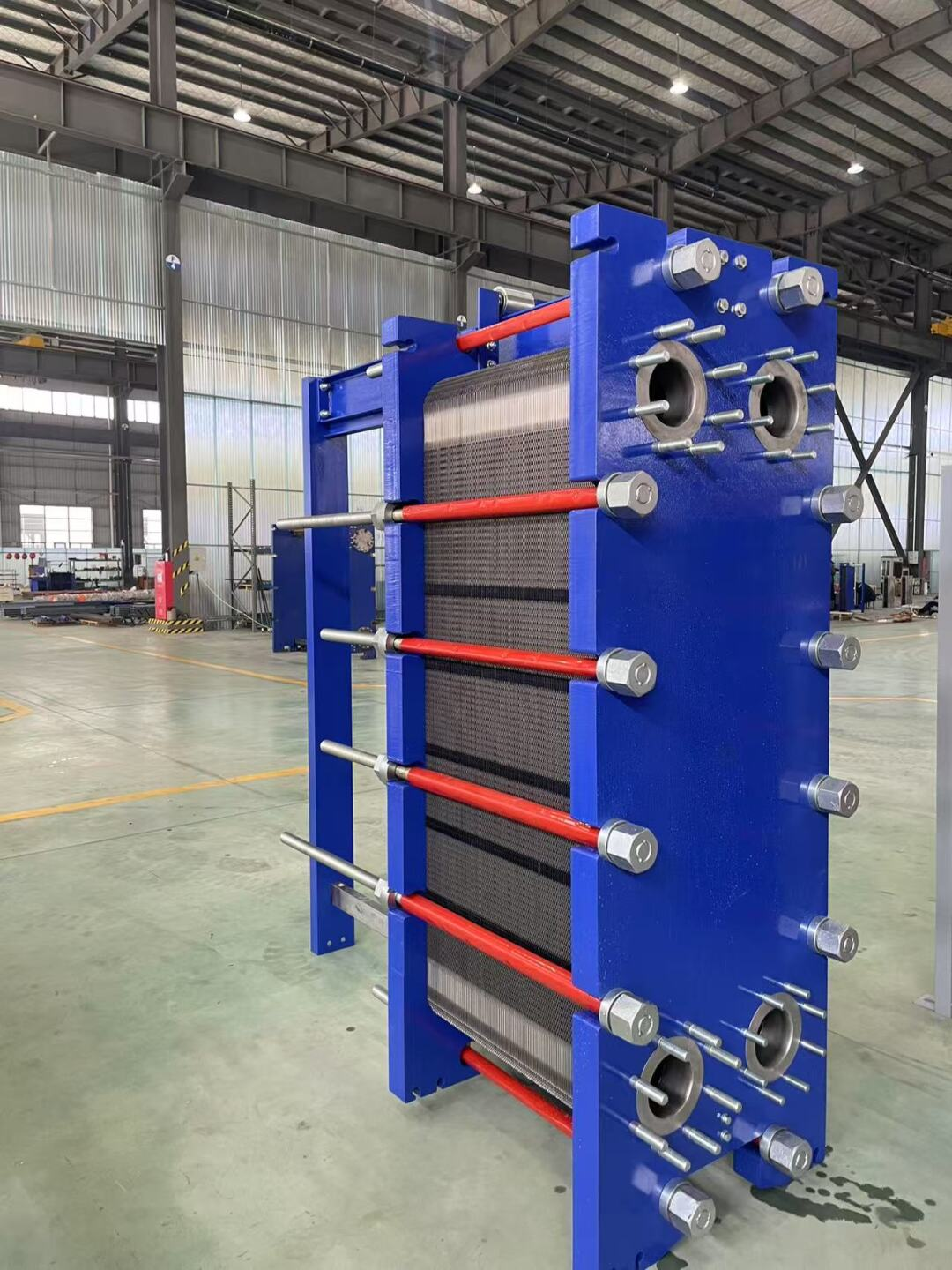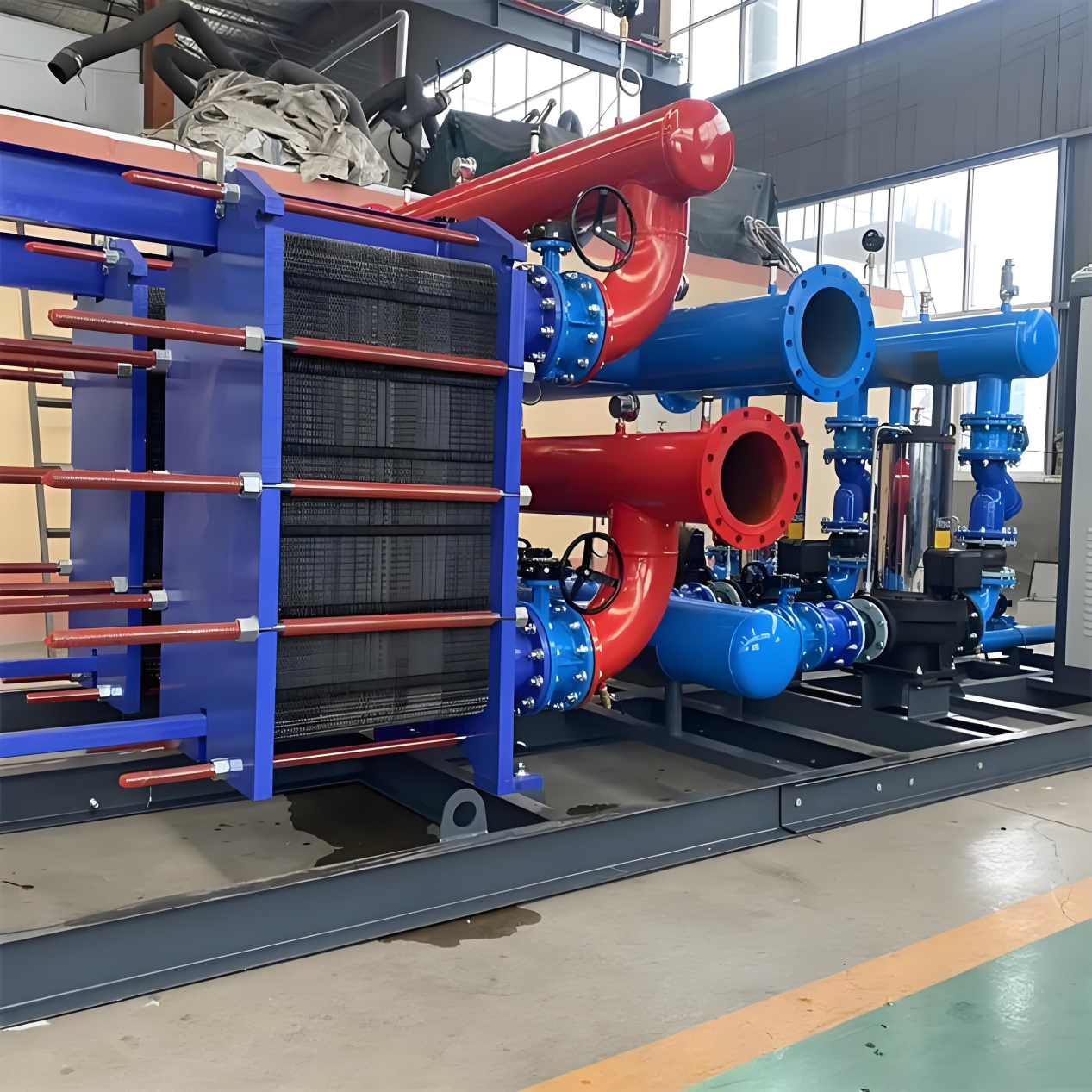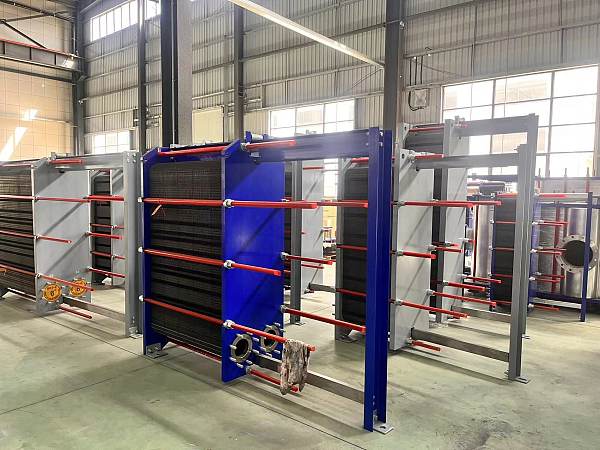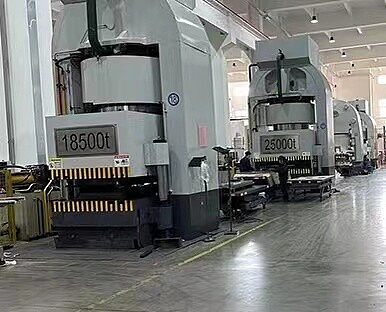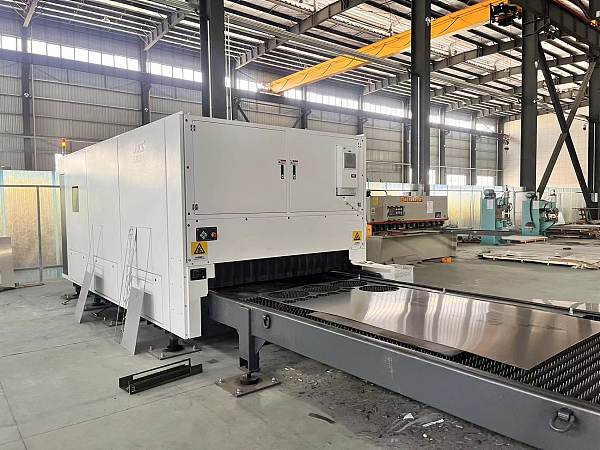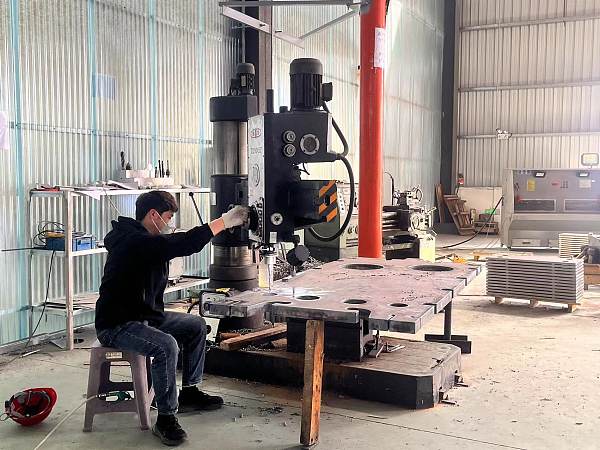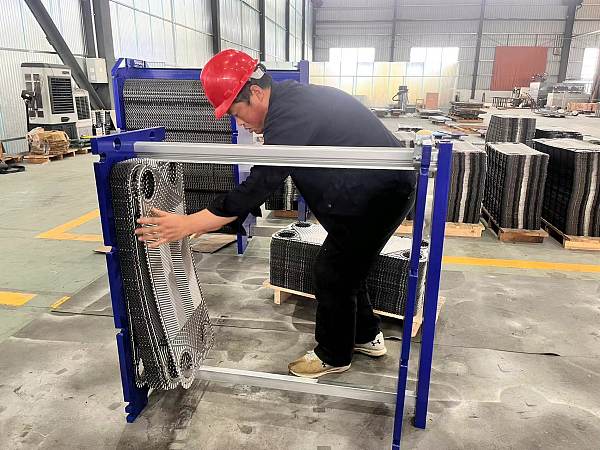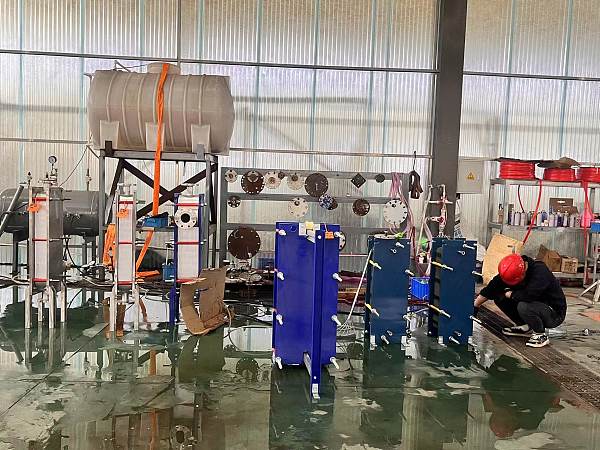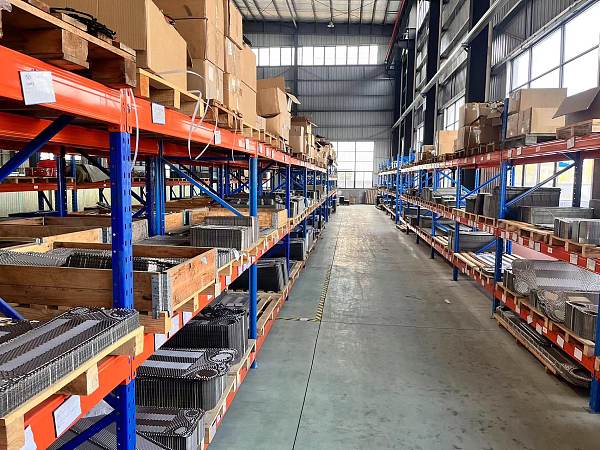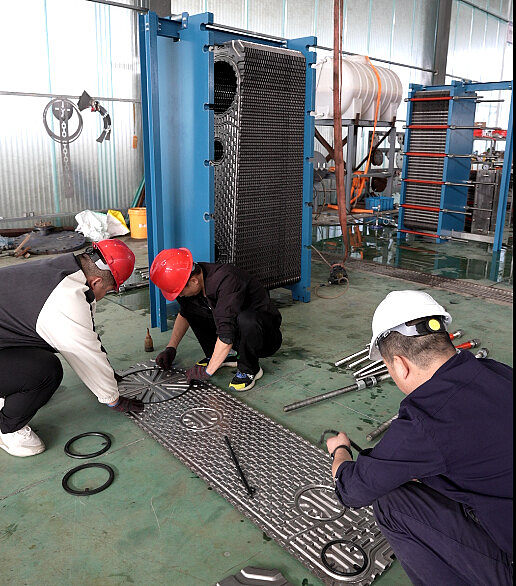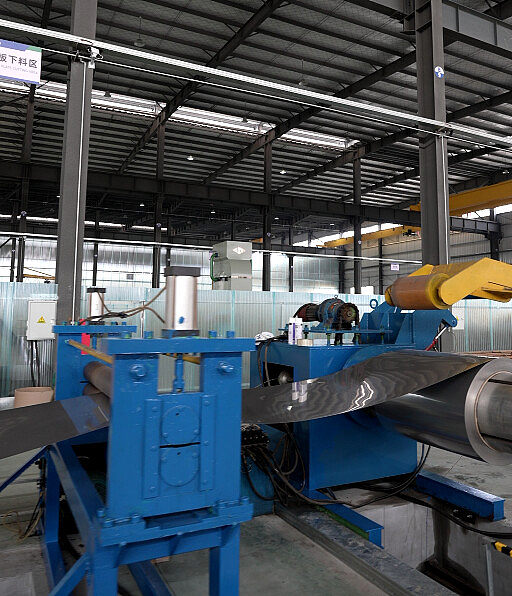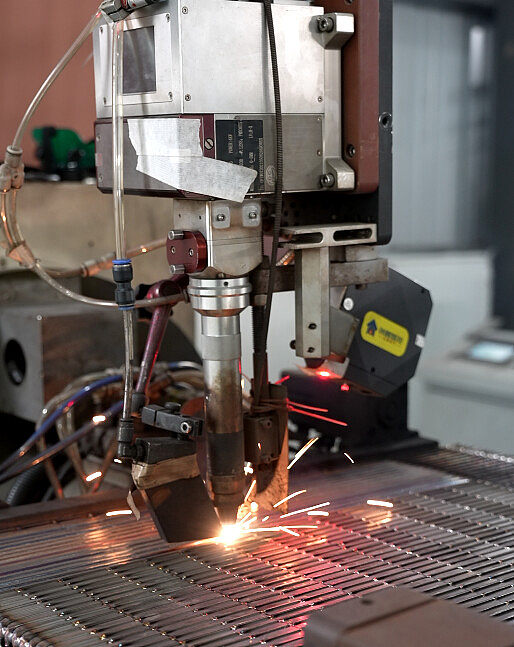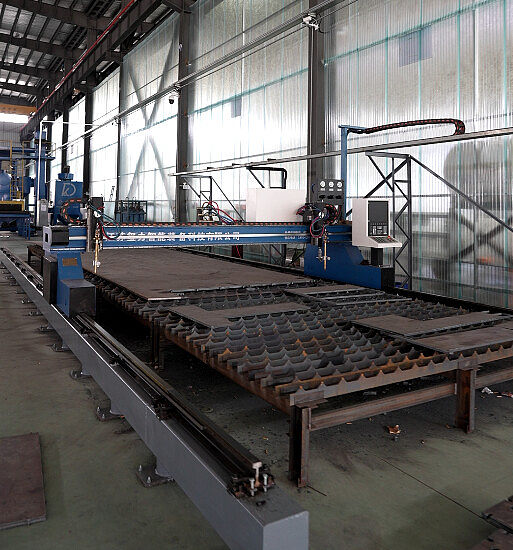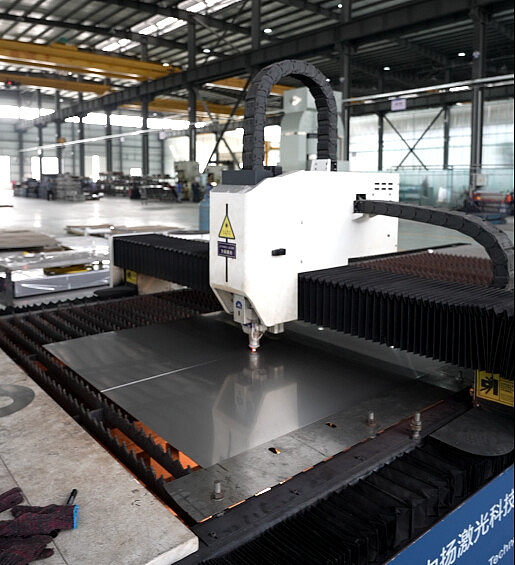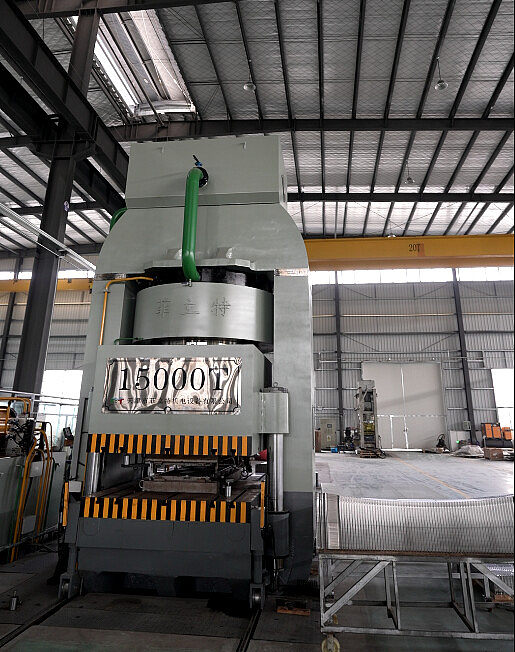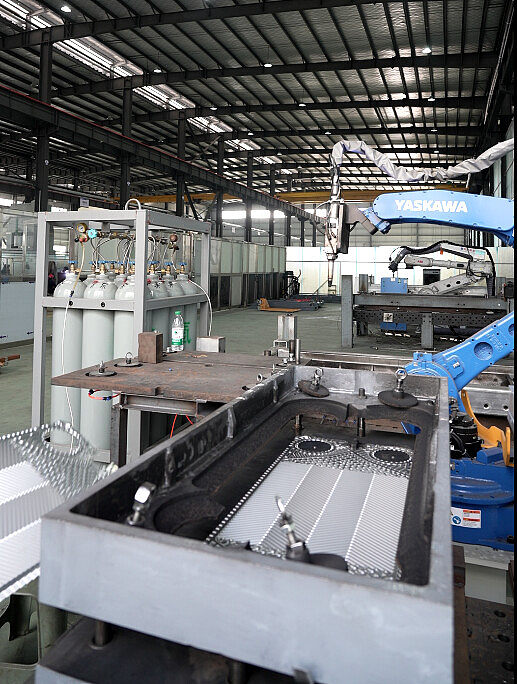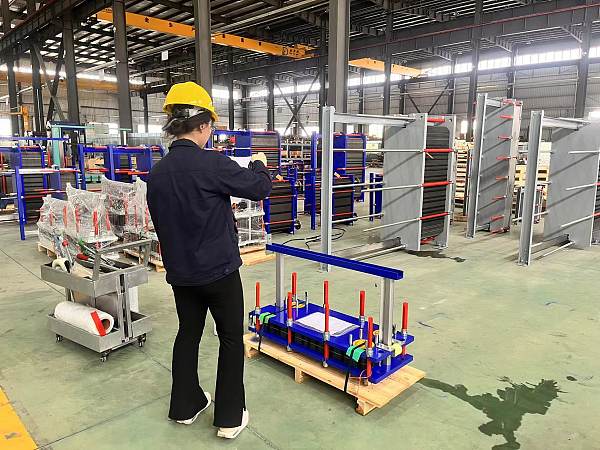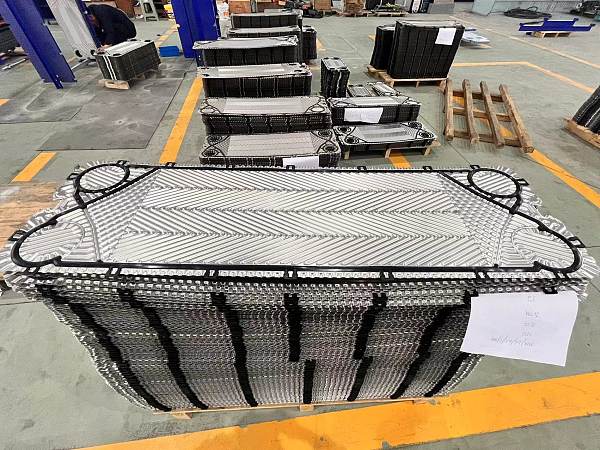Semi-Welded Plate Heat Exchanger
What is a Semi-Welded Plate Heat Exchanger?
A semi-welded plate heat exchanger (PHE) is a hybrid design combining the principles of gasketed and fully welded plate heat exchangers. In this configuration:
● One fluid path is fully welded (typically for aggressive or high-pressure media).
● The other fluid path uses gaskets (for easier maintenance and non-corrosive fluids).
This design offers a balance between the sealing reliability of welded plates and the maintenance flexibility of gasketed plates.
Selection tip:Best Used When:
Key Features of Semi-Welded PHEs
Advantages
Leak-Proof for One Side
The welded side prevents leakage of hazardous or expensive fluids (e.g., refrigerants, acids).
Easier Maintenance
The gasketed side allows for disassembly and cleaning without cutting welds.
Higher Pressure & Temperature Resistance
More robust than gasketed PHEs (typically up to **25-30 bar, 200°C**).
Corrosion
Resistance
The welded side can use exotic materials (titanium, Hastelloy) for aggressive media.
Compact & Efficient
Retains the high heat transfer efficiency of plate heat exchangers.
Disadvantages
Higher Cost Than Gasketed PHEs
Due to partial welding and specialized materials.
Limited to Moderate Pressures
Not as robust as fully welded PHEs for extreme conditions.
Cleaning Challenges
The welded side cannot be mechanically cleaned (requires chemical cleaning).
Detailed Process Applications of Semi-Welded Plate Heat Exchangers Across Industries
Semi-welded PHEs are used in industries where one fluid is corrosive/pressurized, while the other is non-aggressive.
Semi-welded plate heat exchangers (PHEs) are widely used in industries where one fluid stream is aggressive (corrosive, high-pressure, or toxic) while the other requires easy maintenance. Below is a detailed breakdown of their process applications in key industries.
Chiller systems (ammonia, CO₂ refrigeration)
Welded side:Ammonia (corrosive, high pressure).
Gasketed side:Water/glycol (easy maintenance).
Application: Ammonia (NH₃) Chillers
Process Flow:
- Liquid ammonia evaporates in the evaporator, absorbing heat from the chilled water circuit (gasketed side).
- The welded side contains ammonia (high-pressure, toxic), preventing leaks.
- Hot ammonia gas is compressed, then cooled in the semi-welded PHE (condenser).
- Cooling water (gasketed side) removes heat, condensing ammonia back to liquid.
- The design allows high heat recovery while ensuring ammonia containment (safety-critical).
Why Semi-Welded?
Acid cooling (sulfuric, hydrochloric acid)
Welded side:Acid-resistant alloy (Hastelloy, titanium).
Gasketed side:Cooling water.
Application: Sulfuric Acid (H₂SO₄) Cooling
Process Flow:
- Hot sulfuric acid (90-120°C) flows through the welded titanium plates.
- Cooling water (gasketed side) absorbs heat, maintaining optimal reaction temps.
- The welded side uses titanium or Hastelloy to resist acid corrosion.
- The gasketed side (cooling water) can be opened for descaling.
Why Semi-Welded?
Pasteurization & CIP (Clean-in-Place) systems
Welded side:Sterile fluid (prevents contamination).
Gasketed side:Service fluid (easy cleaning).
Application: Sterile Fluid Heat Exchange (CIP Systems)
Process Flow:
- Sterile fluid (e.g., vaccine media, milk) flows through the welded side(contamination-proof).
- Service fluid (hot water/glycol) circulates on the gasketed side for easy inspection.
- The gasketed side is disassembled for cleaning without affecting the sterile side.
Why Semi-Welded?
Seawater cooling for engines
Welded side:Seawater (corrosion-resistant titanium).
Gasketed side:Lube oil (easy inspection).
Application: Seawater Cooling for Engines
Process Flow:
- Seawater (corrosive, high-chloride) flows through welded titanium plates.
- Engine jacket water (gasketed side) is cooled without mixing.
- The gasketed side (freshwater loop) is opened periodically to remove deposits.
Why Semi-Welded?
Oil & Gas (Gas Compression Cooling)
Application: Natural Gas Compression Stations
Process Flow:
- Compressed natural gas (CNG, 30-50°C) is cooled before the next stage.
- Cooling water (gasketed side) absorbs heat.
- The welded side ensures no gas leaks, while the gasketed side is serviced.
Why Semi-Welded?
Power Generation (Lube Oil Cooling)
Application: Turbine Lube Oil Temperature Control
Process Flow:
- Hot lube oil (~80°C) from bearings passes through the gasketed side.
- Cooling water (welded side, if corrosive) removes excess heat.
- Maintains optimal oil viscosity for turbine efficiency.
Why Semi-Welded?
Comparison with Other Heat Exchangers in These Applications
Comparison with Other Heat Exchanger Types
Key Takeaways
Semi-welded PHEs are ideal when:
● One fluid is aggressive (needs welding), while the other is clean (needs easy maintenance).
● Moderate pressure/temperature resistance is required.
● Cost is a consideration, but gasketed PHEs are too risky.
Choose fully welded PHEs for:
● Extreme pressures/temperatures (e.g., oil & gas, high-pressure steam).
● Highly corrosive fluids (e.g., strong acids, chlorides).
Gasketed PHEs are best for:
● Low-pressure, non-corrosive applications (e.g., HVAC, light chemicals).
● Frequent cleaning/disassembly is needed.
Shell & Tube HXs are better for:
● Very high pressures/temperatures (e.g., power plants).
● Fouling-prone fluids (easier tube-side cleaning).
Semi-welded PHEs offer a smart compromise between gasketed (easy maintenance) and fully welded (high reliability) designs. They excel in refrigeration, chemical processing, and food/pharma where one fluid is aggressive, but the other side needs serviceability.
Key Benefits of Semi-Welded PHEs
Frequently Asked Questions
Answer: We are a factory manufacturing plate heat exchangers in Jiangsu, China. More than 15 years ofproduction experience.
Answer: Sure, Welcome coming to visit our factory! We are located in No.198 Zhongshan Road, Qiaoqi, Xuxiake Town, Jiangyin City, Jiangsu, china.
Answer: It depends on which product you purchased, factory workload, outsourcing period of specialmaterial etc.Our fastest delivery time for Gasketted plate heat exchanger is ex-works 2~3 weeksafter replacement oforder.
Answer: We guarantee our product quality in the process of manufacturing, such as:
Raw material check,e.g.PMl, traceability.
Manufacturing process inspection.
Plate pressing inspection.eq.PT RT.
Welding inspection,eg.WPS,PQR,NDE,dimension.
Assembly inspection.
Final assembly dimensionalinspection.
Final hydraulic test.
Contact us
Whether you have questions about our products, need a quote, or want to discuss a custom order, our team is ready to assist you.
Get Free Quotes
Please enter what you would like to know and we will contact you within 24 hours.
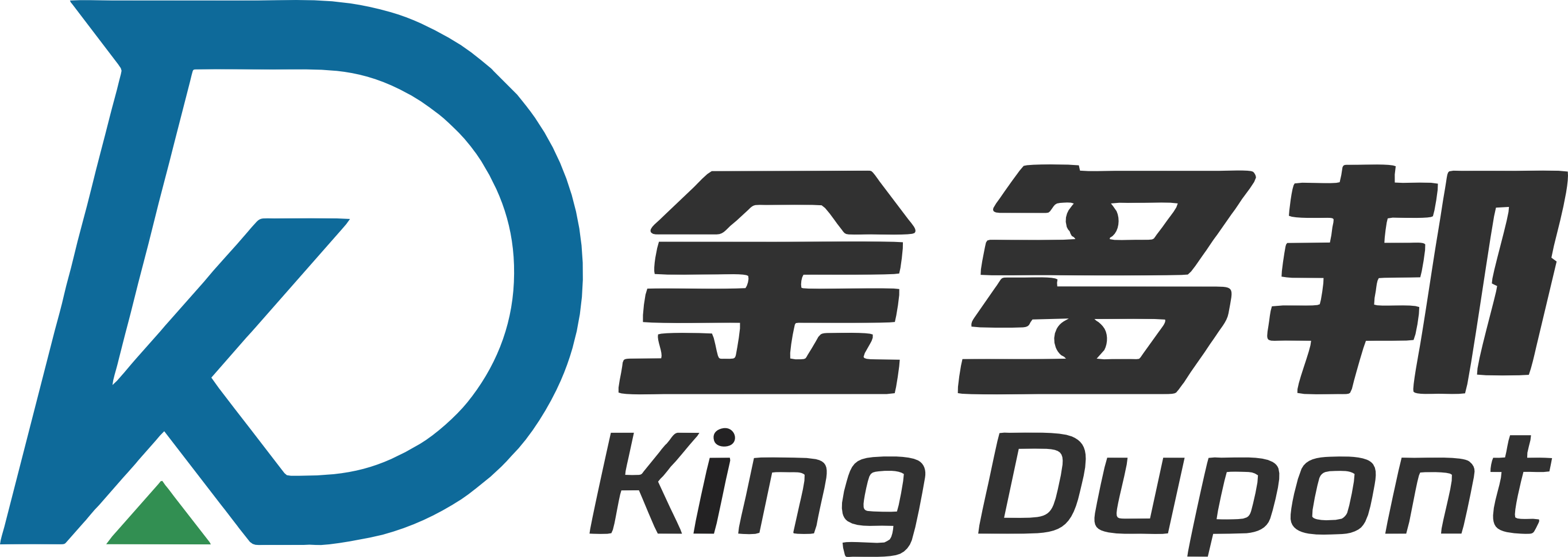
King DuPont, China famous brand of heat transfer and fluid handling supply platform.
Contact

Get Free Quotes
NEED TO CHAT?
We will get back to you within 24 hours of receiving the message.


